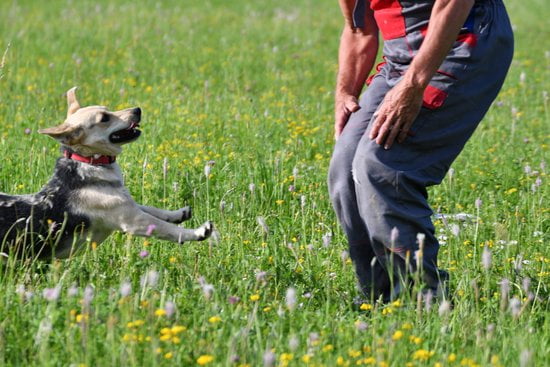Traveling with a furry companion can add an extra layer of joy and adventure to any journey, and train travel is no exception. Whether you’re planning a weekend getaway or embarking on a cross-country expedition, bringing your dog along can make the experience even more memorable. However, before you hit the rails with your four-legged friend, it’s essential to familiarize yourself with the guidelines and policies for carrying dogs on trains.
Each train service may have its own set of rules and regulations regarding pet travel, so it’s important to do your research beforehand. Some trains have specific amenities and accommodations designed for dogs, while others have restrictions or require certain criteria to be met. By understanding these guidelines, you can ensure that both you and your furry friend have a safe and comfortable journey.
In this comprehensive guide, we will delve into various aspects of traveling with dogs on trains. From the types of trains that allow dogs to step-by-step instructions on booking tickets for your canine companion, we will cover everything you need to know about taking your dog on a train journey.
Additionally, we will explore the safety measures provided by dog-friendly trains and discuss crate requirements for carrying dogs onboard. We’ll also provide helpful tips on following proper etiquette when traveling with your pup as well as how to handle unexpected situations or emergencies during train travel.
So whether you’re considering a weekend trip or planning an extended holiday with your beloved canine companion by your side, this article will equip you with all the information needed to make informed decisions about carrying your dog on a train. With our guidance and tips, you can embark on a stress-free and unforgettable train adventure together with your loyal furry friend.
Types of Trains That Allow Dogs
Regional Trains
Regional trains are a popular mode of transportation for both commuters and travelers. Fortunately, many regional train services allow dogs on board, making them a convenient option for canine companions. These trains often have specific compartments or designated areas where pets are allowed to travel. It is important to note that each regional train service may have its own rules and regulations regarding dogs, so it is advisable to check with the specific train company before planning your journey.
Intercity Trains
For longer journeys or traveling between cities, intercity trains offer a comfortable and efficient option. Many intercity train services also accommodate dogs on board, although their policies may vary. Some trains require you to reserve a spot for your dog in advance while others may allow dogs without any reservation. It is essential to carefully review the guidelines provided by the train company regarding pet travel and make any necessary arrangements prior to your trip.
Long-Distance Trains
If you are considering a lengthy trip or exploring different regions within a country, long-distance trains can be an excellent choice. While not all long-distance trains allow dogs on board, some do provide facilities specifically designed for pet owners.
These accommodations may include separate sleeping areas or compartments where both the dog and the owner can comfortably relax during the journey. As with other types of trains, it is crucial to inquire about the rules and requirements beforehand to ensure a seamless experience for you and your furry friend.
It’s worth noting that some countries have specific train services dedicated exclusively to pets and their owners. These specialized pet-friendly trains often include amenities such as play areas, grooming spaces, and even doggy cafes. Researching these unique options can add an extra layer of excitement for both you and your dog during your next train adventure.
With various types of trains available for travel with your dog, it is essential to thoroughly research and understand the specific guidelines and policies of each train service. By doing so, you can make informed decisions and choose the most suitable option for your beloved canine companion. Remember to plan ahead, make reservations when required, and ensure you follow all the necessary rules and etiquettes while traveling with your furry friend on a train.
Booking and Ticketing
Traveling with your dog on a train can be an exciting and memorable experience. However, before embarking on your journey, it is essential to understand the booking and ticketing process for your furry friend. Each train company may have its own guidelines and policies regarding dogs on trains, so it is crucial to do your research beforehand.
- Research the Train Company’s Pet Policy: Start by visiting the train company’s website or contacting their customer service to understand their pet policy. Some companies may restrict the number of pets allowed per train or have specific breed restrictions. Be sure to familiarize yourself with these policies before making any reservations.
- Make Advanced Reservations: As soon as you decide to travel with your dog, it is advisable to make advanced reservations. Trains often have limited space for pets, so securing a spot early will ensure that you and your furry friend can comfortably travel together. Follow the instructions provided by the train company on their website or through their customer service to reserve your spot.
- Provide Necessary Information: During the reservation process, you may be required to provide specific details about your dog, such as its breed, weight, carrier dimensions, etc. This information helps the train company determine if your dog meets their requirements for traveling on trains. Prepare this information in advance to avoid any delays during the booking process.
- Pay Any Required Fees: Some train companies may charge additional fees for traveling with a dog. It is important to clarify any fees associated with bringing your pet onboard during the reservation process itself. Be prepared to pay these fees online or at the station before boarding the train.
By following this step-by-step guide, you can easily navigate through the booking and ticketing process when traveling with your furry friend on a train journey. Ensure that you carefully review all the instructions provided by the train company and be prepared to provide accurate information about your dog. Taking these necessary steps will help make your journey hassle-free and enjoyable for both you and your beloved canine companion.
Dog-Friendly Train Amenities
The comfort and safety of dogs during train travel are important considerations for pet owners. Many train companies understand the value of allowing dogs on board and have implemented various amenities to cater to the needs of canine companions. This section will explore the different dog-friendly amenities provided on trains, ensuring a comfortable and safe journey for your furry friend.
One essential amenity available on dog-friendly trains is designated pet areas or cabins. These areas are specifically designed to accommodate pets and their owners, providing a safe and comfortable space for both. These dedicated areas often feature spacious seating arrangements, ensuring that dogs have enough room to move around without feeling cramped or confined.
In addition to designated spaces, many trains also provide pet-friendly facilities such as water bowls, waste disposal bags, and even toys to keep your dog entertained during the journey. Some trains may even offer special menu options for pets, allowing you to purchase meals or treats specifically designed for canine consumption.
To ensure the safety of all passengers, including pets, many train companies require dogs to be kept on a leash or in a secure carrier throughout the journey. This not only prevents them from wandering off but also ensures that they do not disturb other passengers who may have allergies or fears of dogs.
| Train Amenity | Description |
|---|---|
| Designated Pet Areas | Specific spaces on the train dedicated for pets and their owners. |
| Pet-Friendly Facilities (water bowls/waste disposal) | Provides essential facilities such as water bowls and waste disposal bags. |
| Special Menu Options | Menu options with meals or treats designed for canine consumption. |
| Leash or Carrier Requirement | Mandatory for dogs to be on a leash or in a secure carrier during the journey. |
Crate Requirements
When it comes to carrying your dog on a train, it is important to be aware of the crate requirements set by train companies. Properly securing your furry friend in an appropriate carrier not only ensures their safety and comfort during the journey but also helps maintain a pleasant experience for both you and your fellow passengers. Here are some key points to keep in mind when it comes to crate requirements for dogs on trains:
- Size and Type of Crate: Train companies often have specific guidelines regarding the size and type of crate allowed on board. It is essential to check with the train company before booking your ticket to ensure that your dog’s carrier complies with their regulations. Some companies may require a specific minimum dimension for the crate, while others may allow soft-sided carriers or collapsible crates.
- Ventilation and Visibility: To provide optimal comfort for your dog, their crate should have proper ventilation to ensure adequate airflow throughout the journey. Look for crates that have mesh windows or openings that allow fresh air to circulate. Additionally, it is advisable to choose a carrier with transparent or see-through sides so that your dog can see outside during the journey, which can help reduce anxiety.
- Secure Fastening: Train journeys can sometimes be bumpy, so it is important that your dog’s crate has secure fastenings to prevent any accidental openings or escapes during transit. Check that the latches or zippers on the carrier are in good working condition before boarding the train.
- Labeling and Identification: One requirement that many train companies have is labeling and identification of the dog’s crate. This typically includes affixing a tag or label with all necessary contact information such as your name, address, and phone number. In case of any unforeseen situations or emergencies, this will ensure easy identification of your pet’s carrier.
By understanding these crate requirements and ensuring that your dog’s carrier meets them, you can provide a safe and comfortable journey for your furry friend. Remember to always double-check the specific regulations of the train company you will be traveling with to avoid any last-minute surprises or disappointments.
Rules and Etiquette
When traveling with your dog on a train, it is important to be aware of the rules and etiquette to ensure a smooth and enjoyable journey for both you and your furry friend. Here are some dos and don’ts for traveling with your dog on a train:
DO:
- Follow the guidelines: Each train company may have its own set of rules regarding traveling with dogs. It is essential to familiarize yourself with these guidelines before embarking on your journey. These guidelines often include information on the size and breed restrictions, necessary vaccinations, leash requirements, and any fees or additional paperwork that may be required.
- Keep your dog leashed or in a carrier: To ensure the safety of all passengers, it is important to keep your dog leashed or in an appropriate carrier while on the train. This will prevent any potential incidents or disturbances during the journey.
- Clean up after your dog: Accidents happen, but it is crucial to clean up after your dog if they happen to relieve themselves while onboard. Most trains provide designated areas for pets to do their business, such as pet relief areas or grassy patches at certain stations. Be sure to dispose of waste properly to maintain cleanliness and hygiene onboard.
DON’T:
- Let your dog disturb other passengers: It is important to ensure that your dog behaves appropriately and does not disturb other passengers during the journey. This includes preventing excessive barking, jumping on seats, or approaching other passengers without their consent.
- Leave your dog unattended: Never leave your dog unattended while onboard the train. Your furry companion relies on you for their safety and well-being. It is essential that you keep an eye on them at all times.
- Allow aggressive behavior: If you know that your dog can become aggressive towards strangers or other animals, it is crucial to take necessary precautions before boarding a train with them. This may involve muzzling them or seeking alternative transportation options if necessary.
By following these dos and don’ts, you can help create a safe and comfortable environment for your dog and fellow passengers during the train journey. Remember to be considerate of others and make sure that your dog’s needs are met throughout the trip. With proper preparation and adherence to rules and etiquette, traveling with your dog on a train can be a wonderful experience for both of you.
Safety Tips for Your Dog’s Train Journey
When embarking on a train journey with your canine companion, it is essential to take certain precautions to ensure their safety and well-being throughout the ride. By following these safety tips, you can have a smooth and stress-free journey with your dog.
Firstly, it is crucial to prepare your dog for the train journey. Familiarize them with the sights and sounds of trains by taking them to a train station or allowing them to spend time near railway tracks. This will help reduce any anxiety they may experience during the actual journey.
Secondly, make sure that your dog is wearing identification tags with up-to-date contact information. In case they accidentally get separated from you during the journey, having proper identification can increase the chances of a safe reunification.
When boarding the train, choose a designated area or seat that is comfortable for your dog. It is advisable to bring along familiar items such as blankets, toys, and treats to create a sense of familiarity and comfort for your furry friend.
During the train ride, keep an eye on your dog and ensure that they are secure at all times. If your dog tends to become restless or anxious during travel, consider using calming products such as natural supplements or anti-anxiety wraps recommended by veterinarians.
Additionally, it is vital to provide regular bathroom breaks for your dog during longer journeys. Check with the train staff about designated areas where you can safely take your dog off the train for elimination purposes.
Finally, always carry ample supplies of food and water for your dog during the journey. It is essential to keep them hydrated and fed appropriately according to their normal schedule. Avoid feeding them unfamiliar or new foods that could upset their stomachs.
By following these safety tips, you can ensure a smooth and stress-free train journey for both you and your beloved canine companion. Remember that each dog is unique, so it’s important to cater to their particular needs and preferences while traveling on trains.
Handling Unexpected Situations
When traveling with your dog on a train, it’s important to be prepared for any unexpected situations or emergencies that may arise. This section will provide you with some valuable tips on how to handle dog-related emergencies or issues during your train journey.
First and foremost, it’s crucial to remain calm and composed if an emergency occurs. Panicking will not only escalate the situation but also distress your dog further. Stay focused and assess the situation before taking any action.
If your dog becomes injured or falls ill during the train journey, it’s essential to seek immediate medical attention. Most trains have a first aid kit on board, so notify a staff member about the situation as soon as possible. They can provide guidance and assist you in contacting the necessary veterinary professionals at the next available stop.
In case of a lost or missing dog, inform the train staff immediately. They will typically make announcements throughout the train and contact relevant personnel at upcoming stations to help locate your furry friend. Make sure to have clear identification tags on your dog’s collar with your contact information or consider microchipping them for added security.
Moreover, it is advisable to carry essential items such as a leash, extra food, water, and medication for your dog when traveling by train. These supplies can come in handy in case of delays or unexpected situations where access to such amenities may be limited.
Remember that prevention is key in ensuring a safe journey for your dog. Keep them securely leashed at all times while onboard and pay attention to their behavior. If you notice any signs of discomfort or unease, try to identify and address the cause promptly.
| Emergencies | Actions |
|---|---|
| Injury or illness | Seek immediate medical attention and notify train staff |
| Lost or missing dog | Inform train staff and utilize identification tags or microchipping |
| Delay or unexpected situation | Come prepared with essential supplies for your dog’s well-being |
| Signs of discomfort or unease | Promptly address the cause and ensure the dog’s comfort |
By being prepared, attentive, and knowledgeable about potential emergencies or issues, you can ensure a safer and more enjoyable train journey with your beloved canine companion. Remember to always prioritize your dog’s well-being and stay informed about the train’s emergency procedures to handle any situation effectively.
Pet-Friendly Destinations
Exploring Scenic Routes
Train travel not only provides a convenient mode of transportation but also offers incredible opportunities for scenic sightseeing. If you are looking to embark on a train journey with your four-legged friend, there are several pet-friendly destinations that you can consider.
One such route is the Pacific Surfliner, which travels along the stunning California coastline. Not only will you and your canine companion get to enjoy breathtaking ocean views, but the train also stops at several dog-friendly towns, such as San Diego and Santa Barbara, where you can explore pet-friendly attractions and parks.
For those seeking an adventure in the northeastern United States, Amtrak’s Vermonter route is an excellent choice. This train takes you through picturesque landscapes, including rolling hills and charming small towns. Vermont itself is known for being extremely dog-friendly, with many establishments welcoming dogs on their patios or even inside their establishments. With its pet-friendly atmosphere and beautiful scenery, this route is perfect for exploring with your furry friend.
Urban Excursions
If city life is more your style, there are plenty of urban destinations that can be easily accessed by train and offer numerous pet-friendly activities. New York City is one such destination that welcomes four-legged visitors with open arms.
Not only does New York City have a variety of dog parks where your pup can roam off-leash, but many shops and restaurants allow well-behaved dogs inside. Taking the subway to navigate through the city is also possible with small dogs in carriers.
Another notable urban destination perfect for dog owners is Portland, Oregon. Known for its vibrant food scene and laid-back atmosphere, Portland boasts countless dog-friendly breweries, coffee shops, and parks. The city’s light rail system makes it easy to explore different neighborhoods with your furry friend by your side.
National Park Adventures
For nature lovers looking to combine train travel with outdoor exploration, several national parks can be reached by train and offer pet-friendly activities. The Grand Canyon Railway provides a unique way to visit the awe-inspiring Grand Canyon National Park. Dogs are allowed on board the train in pet-friendly cars, and once you arrive at your destination, you can hike along designated trails with your pup.
Another pet-friendly park accessible by train is Glacier National Park in Montana. Amtrak’s Empire Builder route takes you through stunning landscapes before arriving near the park’s west entrance. From there, you and your dog can explore numerous pet-friendly trails and enjoy the park’s breathtaking scenery.
By choosing these pet-friendly destinations and routes, you can embark on unforgettable train adventures with your beloved canine companion. Remember to check specific guidelines and restrictions for each destination and plan ahead to ensure a smooth and enjoyable journey for both you and your furry friend.
Frequently Asked Questions
Can I bring any size dog on a train?
One common concern among dog owners is whether there are restrictions on the size of dogs that are allowed on trains. While policies may vary between different train companies and countries, most trains have rules in place regarding the size of dogs that can be brought onboard. Generally, small to medium-sized dogs are permitted on trains, as they can easily be accommodated in the designated pet areas or carrier crates.
However, larger breeds may not be allowed due to limited space or safety concerns. It is important to check with the specific train company or consult their website for information regarding size restrictions before planning your journey.
Do I need to buy a ticket for my dog?
Another common question is whether dogs require their own ticket for train travel. Again, this may vary depending on the train company and country. In some cases, small dogs that fit into carrier bags may not require a separate ticket and can travel free of charge.
However, larger dogs or those that do not fit under the seat or in a designated area will usually require a ticket at a discounted fare. It is essential to inquire about ticketing policies when booking your own ticket to ensure you comply with any requirements and avoid any issues during your journey.
Are there specific times when I’m allowed to travel with my dog?
Many train companies have certain restrictions when it comes to traveling with dogs, particularly during peak travel hours. Some trains may only allow dogs on board during off-peak hours or specific times of the day when there are fewer passengers. This ensures both the comfort and safety of other passengers as well as your own canine companion.
It is crucial to check the specific train company’s guidelines and schedules to know if they have any limitations on when you can travel with your dog. Planning ahead and being aware of these restrictions will help you make appropriate arrangements and have a hassle-free journey with your furry friend.
Conclusion
In conclusion, understanding the guidelines and policies for carrying dogs on trains is essential for making informed decisions and enjoying memorable train adventures with your beloved canine companion. By familiarizing yourself with the types of trains that allow dogs, you can choose the most suitable train travel option for your pet. Whether it’s a local commuter train or a long-distance journey, there are options available to accommodate your furry friend.
Once you’ve identified the appropriate train, booking and ticketing can be done following a step-by-step guide. It’s important to reserve a spot for your dog in advance to ensure their space and comfort during the journey. Additionally, exploring the dog-friendly amenities provided on trains will give you peace of mind knowing that your pet will have a comfortable and safe experience.
To comply with crate requirements, understanding the specifications and restrictions for dog carriers is essential. This ensures that your pet is securely contained throughout the journey while also adhering to train regulations. Following the rules and etiquette for traveling with your dog on a train is equally important to maintain a harmonious environment for all passengers.
Lastly, taking safety precautions and being prepared for unexpected situations will help ensure a smooth and stress-free ride for both you and your dog. By addressing common concerns and queries through frequently asked questions, you can gain further insights into traveling with dogs on trains.
Overall, by making informed decisions based on the guidelines provided in this article, you can embark on unforgettable train adventures with your beloved canine companion. From scenic routes to pet-friendly destinations, traveling with your four-legged friend opens up new possibilities for exploration while creating lasting memories along the way.
Frequently Asked Questions
How can I travel with my dog?
Traveling with a dog requires careful planning and preparation to ensure a smooth journey for both you and your furry friend. Firstly, check the destination’s requirements for bringing pets, such as vaccinations or documentation. Next, choose the appropriate mode of transportation depending on the distance and other factors like your dog’s size and temperament. If traveling by car, consider investing in a secure crate or harness to keep your dog safe during the ride.
Make sure to pack essential items such as food, water, leash, toys, bedding, and waste disposal bags. It’s important to take regular breaks for exercise and bathroom breaks when driving long distances. For air travel, consult with the airline about their pet policies and regulations beforehand. Research options like traveling in-cabin with your dog or using animal transport services if necessary.
How do I keep my dog calm on the train?
Train travel can sometimes be stressful for dogs due to unfamiliar surroundings and the presence of other passengers. To keep your dog calm on the train, start by getting them acclimated to their carrier or crate through gradual training at home before the trip. Make it a comfortable space by including familiar items such as their blanket or toys inside it.
Additionally, try taking short practice trips on public transportation to expose your dog to different sounds and experiences associated with traveling. On the day of travel, ensure your dog gets adequate exercise beforehand to help reduce anxiety levels during the journey. Consider feeding them a light meal prior to boarding as a full stomach might make them feel more relaxed.
How do you travel with a 50 pound dog?
Traveling with a 50-pound dog requires some additional considerations due to their larger size compared to smaller breeds. If you are traveling by car, it is crucial to secure your dog properly in order to avoid accidents or distractions while driving; using a large crate or harness designed for bigger dogs can help ensure their safety during transit. Additionally, remember that larger dogs typically have more energy compared to smaller breeds, so plan for frequent rest stops where they can stretch their legs and go to the bathroom.
When traveling by air, contact the airline ahead of time to inquire about their specific regulations for larger dogs. It may be necessary to purchase a larger crate or choose an airline that allows dogs in-cabin, if applicable. Additionally, bring along essential supplies like food, water, extra leash, and a comfortable bed or blanket to help them feel more at ease during the journey.

Welcome to the blog! I am a professional dog trainer and have been working with dogs for many years. In this blog, I will be discussing various topics related to dog training, including tips, tricks, and advice. I hope you find this information helpful and informative. Thanks for reading!





